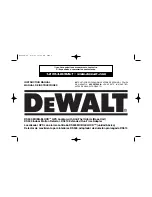
FCC WARNING: This equipment generates, uses, and can radiate radio frequency energy and, if not installed
and used in accordance with the instruction manual, may cause interference to radio communications. It has
been tested and found to comply with the limits for Class A computing device pursuant to Subpart B of Part 15
of FCC Rules, which is designed to provide reasonable protection against such interference when operated in
a commercial environment. Operation of this equipment in a residential area is likely to cause interference, in
which case the user will be required to correct the interference at his own expense.
If these instructions are not clear, or if additional information or clarification is needed, please consult your
local authorized Fire Control Instruments, Inc. distributor.
Because of design changes and product improvements, the information in this manual is subject to change
without notice. FCI reserves the right to change hardware and/or software design, which may subsequently
affect the contents of this manual. FCI assumes no responsibility for any errors that may appear in this manual.
Neither this manual nor any part of it may be reproduced without the advance written permission of Fire
Control Instruments, Inc.
Limitations of Fire Alarm Systems
Manufacturer recommends that smoke and/or heat detectors be located throughout a protected premise
following the recommendations of the current edition of the National Fire Protection Association Standard 72,
National Fire Alarm Code (NFPA 72), manufacturer’s recommendations, State and local codes, and the
recommendations contained in Guide for the Proper Use of System Smoke Detectors, which is made avail-
able at no charge to all installing dealers. A study by the Federal Emergency Management Agency (an agency
of the United States government) indicated that
smoke detectors may not go into alarm or give early warning in
as many as 35% of all fires.
While fire alarm systems are designed to provide warning against fire, they do not
guarantee warning or protection against fire. Any alarm system is subject to compromise or failure to warn
for a variety of reasons. For example:
•
Particles of combustion or “smoke” from a developing fire may not reach the sensing chambers of the smoke
detector because:
–
Barriers such as closed or partially closed doors, walls, or chimneys may inhibit flow.
–
Smoke particles may become “cold” and stratify, and may not reach the ceiling or upper walls
where detectors are located.
–
Smoke particles may be blown away from detectors by air outlets
–
Smoke particles may be drawn into air returns before reaching the detector.
In general, smoke detectors on one level of a structure cannot be expected to sense fires developing on
another level.
•
The amount of “smoke” present may be insufficient to alarm smoke detectors. Smoke detectors are
designed to alarm at various levels of smoke density. If such density levels are not created by a developing
fire at the location of detectors, the detectors will not go into alarm.
•
Smoke detectors, even when working properly, have sensing limitations. Detectors that have photoelectronic
sensing chambers tend to detect smoldering fires earlier than flaming fires, which have little visible smoke.
Detectors that have ionizing-type sensing chambers tend to detect fast flaming fires earlier than smoldering
fires. Because fires develop in different ways and are often unpredictable in their growth, neither type
of detector is necessarily best and a given type of detector may not provide adequate warning of a fire.
•
Smoke detectors are subject to unwanted or nuisance alarms. For example, a smoke detector located in or
near a kitchen may go into nuisance alarm during normal operation of kitchen appliances. In addition, dusty
or steamy environments may cause a smoke detector to alarm unnecessarily. If the location of a smoke
detector causes an abundance of unwanted or nuisance alarms, do not disconnect the smoke detector;
call a professional to analyze the situation and recommend a solution.
9000-0447
3 of 43
Technical Manuals Online! - http://www.tech-man.com






































